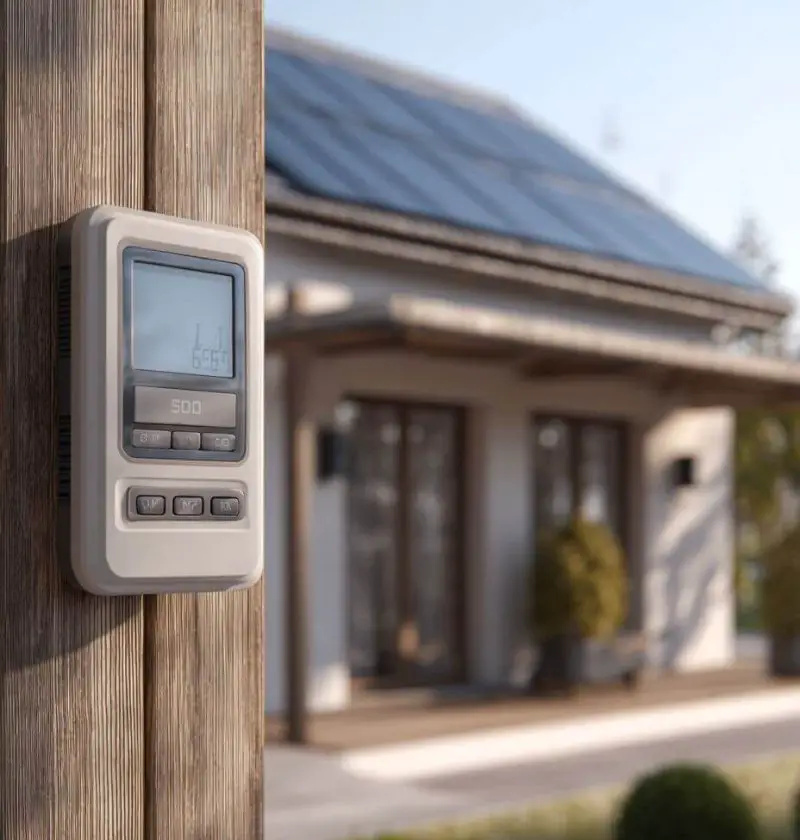Save This Recipe
Okay, let’s be honest for a minute.
Have you ever opened your energy bill, stared at the number, and thought, “Wait a minute… is that a typo?”
Yeah. Me too.
And what makes it worse? You’re not even doing anything fancy. You’re not blasting the AC with the windows open. You’re not throwing nightly laundry parties. You’re just living.
But here’s the truth—and I say this with love—your house might be leaking energy in ways you don’t even notice. Not dramatic, movie-scene stuff. Just quiet, sneaky little culprits sipping electricity like it’s sweet tea.
So grab that tea (or coffee, or wine, I won’t judge), and let’s chat about 10 things that might be bloating that bill—and what you can actually do about it.
1. Your Insulation’s Doing the Bare Minimum (Or Nothing at All)
If your home feels chilly in winter and hot in summer no matter what, your insulation might be phoning it in. And when insulation doesn’t pull its weight, your heating and cooling systems go into overdrive.
That means your money’s not just flying out the window—it’s also crawling up the attic and sneaking through the floorboards.
What to do: Check your attic insulation first (that’s where a lot of heat escapes). Weatherstrip doors and windows. And don’t forget about drafty basements or crawl spaces.
2. Old Appliances = Silent Energy Hogs
You know that fridge you’ve had since the Bush administration? The one you keep saying still “works just fine”?
Well, it might be working you over.
Old washers, dryers, fridges—they weren’t built with energy savings in mind. And even if they were halfway decent back then, years of wear make them guzzle more power than they should.
What to do: Upgrade when you can (look for the Energy Star label). And if you can’t replace yet, make sure they’re at least clean, maintained, and not running 24/7.
3. That HVAC System Is Tired (Bless Its Heart)
Let’s not sugarcoat it—your heating and cooling system is probably the biggest reason your energy bill is doing the cha-cha.
And when it’s old, dirty, or not working quite right? It runs longer, harder, and with way less efficiency.
What to do: Change the filters (seriously, every 1–3 months). Get it serviced once a year. And if it’s older than your dog, start planning for a newer, more efficient model.
4. You’re Still Using the Wrong Light Bulbs (Yes, Really)
If you’re still hanging on to those old incandescent bulbs, it might be time for a gentle intervention. They’re warm, yes. Nostalgic, sure. But they’re also major energy suckers.
What to do: Swap ‘em for LED bulbs. They use a fraction of the power and last forever. Plus, they’ve gotten a whole lot prettier—none of that cold, blue light nonsense.
5. Phantom Power: The Stuff That’s On When It’s “Off”
Here’s the kicker—stuff like TVs, cable boxes, phone chargers, and even toasters are using power even when they’re off. It’s called phantom load or standby power.
You think you’re being energy conscious, and meanwhile your coffee maker’s over there quietly running up your bill.
What to do: Unplug it if you don’t use it every day. Or invest in smart power strips—they cut power automatically when devices aren’t in use. Easy win.
6. Your Water Heater’s Working Overtime
You don’t need boiling water to wash your hands, but some heaters are set way too high. And older models? They run non-stop just to keep that tank toasty.
What to do: Turn your water heater down to 120°F. Wrap it with an insulating blanket. And if you’re feeling fancy, look into a tankless model when it’s time to replace it.
7. Maintenance? What Maintenance?
Let’s not pretend. Most of us don’t regularly clean vents, service the dryer, or vacuum behind the fridge. But those little maintenance tasks? They matter. A lot.
When machines have to work harder to do the same job, guess who’s footing the bill?
What to do: Clean filters, check coils, clear vents. A little elbow grease now can save a lot of money later—and help your appliances live longer, too.
8. Windows and Doors That Let Everything In (Except Peace)
If your windows and doors are older, they might as well be saying, “Come on in, hot air! Welcome, cold draft!”
Tiny gaps and single panes mean your house can’t hold temperature, no matter how hard the thermostat tries.
What to do: Use weatherstripping, seal cracks with caulk, and consider upgrading to double-pane windows if the budget allows. Even heavy curtains can help in a pinch.
9. Thinking Light Switches Are Enough
A lot of folks think saving energy just means turning off the lights when you leave the room. That’s great—it really is. But it’s just the tip of the iceberg.
If your thermostat’s set too high in winter or your dryer’s running daily for two towels… turning off the bathroom light probably isn’t the game-changer you’re hoping for.
What to do: Look at the big stuff—HVAC, insulation, appliances. Then fine-tune with the smaller habits. It all adds up.
10. No Plan = Higher Bills
Energy savings doesn’t mean you have to live in the dark or freeze all winter. It just means being intentional. Most of us never look at our usage, let alone think about it.
But just like budgeting your money, keeping tabs on your energy gives you power. Literally.
What to do: Install a smart thermostat. Track your energy usage online (many utility companies offer free dashboards). Set small goals. Challenge the family. Make it fun.
Final Thoughts (From One Energy-Watcher to Another)
Listen, I know life is busy. And most of us just want our homes to be comfortable without having to think about what’s behind the scenes. But those behind-the-scenes things? They matter.
Saving energy isn’t about sacrifice—it’s about smarts.
It’s about noticing what’s quietly costing you and choosing to do something about it.
So maybe this week, you fix that drafty window. Next week, you unplug that extra fridge in the garage. Little by little, you take your power bill back into your own hands.
Because you’re not just paying for electricity. You’re paying for comfort, safety, and peace of mind.
And that? That’s worth doing right.

